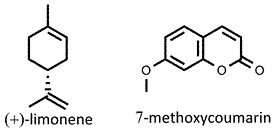 Citrus aurantiifolia
Citrus aurantiifolia
lime
Citrus aurantiifolia (Christm.) Swingle (Rutaceae); lemmetjie (Afrikaans); lai meng (Chinese); limette acide (French); Saure Limette (German); lenuu, nimbu (Hindi); lima (Italian); raimu (Japanese); limau asam, jeruk nipis (Malay); lima ácida (Portuguese); laim (Russian); lima, lima ácida (Spanish); manao (Thai); chanh ta (Vietnamese)
DESCRIPTION The fresh unripe, greenish fruits, about 5 cm (2 in.) in diameter, are mostly used but sometimes also ripe (yellow) ones. They are boiled in brine and then smoked and dried to produce black limes (loomi, lumi, omani), a popular spice in Middle Eastern cuisine.
THE PLANT Lime or West Indian lime (also known as Mexican lime or key lime) is a small, thorny tree with strongly aromatic leaves, pure white flowers and small fruits with several seeds.1,2 A second species (or variety) is known as Tahiti lime, Persian lime or seedless lime (C. latifolia). It has slightly larger, seedless fruits.1,2
ORIGIN Lime originated somewhere in Southeast Asia. It is the main sour citrus fruit in tropical Asia (India and China) where lemons are mostly unknown. The plants were distributed to Africa and the New World and are now cultivated in the southern United States, West Indies, Mexico, Peru, Brazil, Egypt, Ivory Coast, India and South Africa.1,2
CULTIVATION Propagation is from seeds rather than grafting. The only other Citrus grown from seeds is bitter orange, C. aurantium.1,2 The tree requires a tropical climate and is the most frost-tender of all Citrus species.
HARVESTING Fruits are hand-picked (using protective gloves) when fully mature but still unripe and pale green in colour.
CULINARY USES Limes, lime juice or lime peels are widely used in marmalade, jam, sorbet, chutney, pickles, salad dressings and desserts. It is particularly important in sauces, fish and meat dishes and the juice is sometimes used as a marinade for raw fish, using a “cooking” method known as ceviche (where the acidity of the lime juice denatures the proteins in the fish). The juice is popular as a drink and is used in punches and cocktails. The zest is used like lemon zest (see C. limon) but the latter lacks the refreshing lime flavour. West Indian lime leaves (dried or preferably fresh) are sometimes used in Asian cooking to flavour chicken soup, curries, sambals, and fish dishes but makrut lime is much more popular. Essential oil distilled from the fruits is used in carbonated drinks, confectionery, alcoholic beverages, desserts, jellies, puddings and meat products.3 Black limes are used with pulses, seafood, meat and rice dishes, to which they add a sour, smoky and slightly bitter taste. Powdered black lime is an ingredient of Persian Gulf-style baharat spice mixtures.
FLAVOUR COMPOUNDS Essential oil distilled from lime fruits has (+)-limonene as main compound, with numerous minor constituents.3,4 The fresh, floral-like aroma of the oil was found to be mainly due to geranial, neral and linalool, while the intense sweet note comes from 7-methoxycoumarin.4

NOTES Lime fruits are very acidic and low in sugar (0.8%) with 46 mg/100 g of vitamin C.3
1. Morton, J. 1987. Mexican Lime. pp. 168–172. In: Fruits of warm climates. Julia F. Morton, Miami, Florida.
2. Saunt, J. 2000. Citrus varieties of the world. Sinclair International Ltd, Norwich.
3. Harborne, J.B., Baxter, H. 2001. Chemical dictionary of economic plants. Wiley, New York.
4. Chisholm, M.G., Wilson, M.A., Gaskey, G.M. 2003. Characterization of aroma volatiles in key lime essential oils (Citrus aurantifolia Swingle). Flavour and Fragrance Journal 18: 106–115.